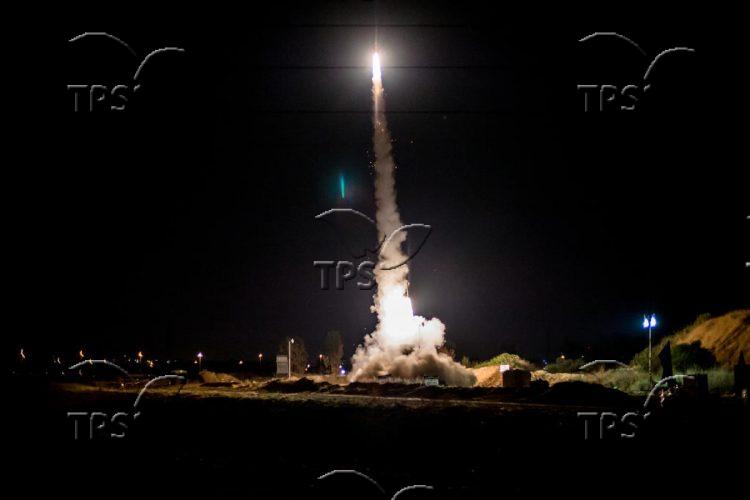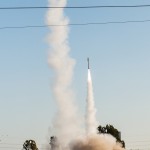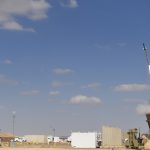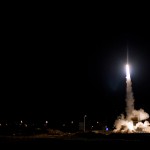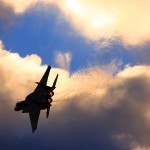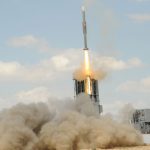From Arrow to Lasers, Israeli Air Defense Draws International Interest
Jerusalem, 10 December, 2023 (TPS-IL) -- In recent years, Israel has developed a sophisticated, multi-layered aerial defense system, protecting the country from a range of missile and drone threats from as close as Gaza and as far as Yemen.
International demand for Israel’s military technology has surged as European countries increased their defense budgets in response to Russia’s war in Ukraine. While the Iron Dome system is the best-known system, recent operational successes for the David’s Sling and Arrow systems are drawing attention.
“Standing atop the Iron Dome is a layer comprising the David’s Sling system, equipped to counter longer-range threats. Further up the defense hierarchy lie the Arrow 2 and Arrow 3 systems, capable of intercepting threats from distant regions, including the Red Sea,” Brig. – Gen. (res) Doron Gavish, former commander of the Aerial Defense Array explained to the Tazpit Press Service.
The systems have notched more than 2,000 interceptions, Gavish notes.
“However, it is essential to acknowledge that while these defense systems boast a high success rate, they are not foolproof,” he stressed t TPS. “There is a rate of successful infiltration by incoming rockets. In such instances, the Home Front Command steps in, issuing alerts and guiding residents to safety shelters.”
The Arrow and David’s Sling
In September, Germany and Israel signed a nearly €4 billion ($4.3d billion) deal to purchase an Arrow-3 system, which is designed to intercept ballistic missiles in space. The system made its first interception when it shot down a ballistic missile fired by Iran-backed Houthi rebels in Yemen.
The interception is widely believed to have taken place outside the earth’s atmosphere, which would make Israel the first country to shoot down a rocket in space. But Israel has not confirmed that detail. The Arrow system is developed and produced by the Lod-based Israel Aerospace Industries (IAI).
Meanwhile, Finland signed a €317 million ($342 million) agreement to purchase David’s Sling in November. The system, which was formerly called Magic Wand, is designed to intercept medium range threats at high altitudes and speeds such as ballistic and cruise missiles, aircraft and drones.
Produced by the Haifa-based Rafael Advanced Defense Systems, David’s Sling was used operationally for the first time when it was deployed against two short range ballistic missiles fired from Syria in July 2018. The Syrian missiles fell short of the Israeli border and the David’s Sling interceptors were detonated in flight.
But the system made its first operational intercept when the David’s Sling shot down a rocket heading towards Tel Aviv in May 2023. More recently, the system shot down a rocket fired from Gaza heading towards the northern city of Safed in October.
Another layer to Israel’s aerial defense is the Barak MX system, which is primarily used to defend naval vessels. Barak was developed in a joint effort of IAI and India’s Defence Research and Development Organisation. The system is now manufactured collaboratively by Rafael along with India’s Bharat Electronics Limited and Bharat Dynamics Limited.
In November, Slovakia agreed to purchase three Barak launchers for €128 million ($138 million).
Lasers Complementing Iron Dome
The Iron Dome system put Israel on the map with its ability to shoot down short-range threats such as rockets, missiles and mortars. It was first deployed in March 2011, and the following month, it scored its very first interception: a Grad rocket fired at Ashkelon.
Iron Dome’s Tamir interceptor missiles reportedly cost around $50,000 apiece. However if the tracking system determines that a rocket will not land in a populated area, Iron Dome allows the rocket to crash harmlessly in open areas.
But Israel is also developing what may be the world’s first laser-based air defense system called the Iron Beam, with the hope of deploying it for operational use in 2025.
The plan is integrate Iron Beam into the Iron Dome. In the future, an algorithm will determine whether to shoot down aerial threats with a laser or the Tamir interceptors.
In January 2020, the Israeli Defense Ministry announced three different laser programs: A ground-based laser to supplement Iron Dome, a mobile system to protect military units during maneuvers and an aerial system capable of downing threats from above. The aerial version will give Israel the ability to use lasers against rockets above cloud cover.
Also in development is the C-Dome system, designed to protect naval vessels from short-range threats. Installed on corvette ships, the C-Dome is expected to play a key role in protecting Israel’s offshore gas fields.
As part of Washington’s assistance to fund the development and production the Iron Dome and Arrow systems, Israel and the US have agreed not to transfer the systems to any third party without the other’s agreement. This is a key reason Israel was able to prevent the Biden administration from transferring a pair of US-owned Iron Dome battery to Ukraine.
Meanwhile, the Israel-Germany Arrow-3 sale was held up for months before Washington gave its approval.

